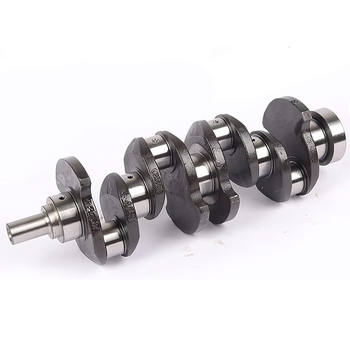The Hidden Powerhouse: Understanding Crankshafts
To be honest, most people don't give crankshafts a second thought. But here's the thing: they're a crucial component in every internal combustion engine. A crankshaft converts linear motion from the pistons into rotational motion, which ultimately powers your vehicle. So, it's no surprise that innovations in crankshaft design have had a profound impact on automotive history.
From Cast Iron to Forged Steel: Material Advancements
In the early days of automotive engineering, crankshafts were typically made of cast iron. However, as engine power increased, so did the stresses on the crankshaft. This led to the development of forged steel crankshafts, which were stronger and more durable than their cast iron counterparts.
The Benefits of Forged Steel
Forged steel crankshafts offered several advantages over cast iron. They were less prone to cracking and could withstand higher loads, allowing for increased engine power and performance. Additionally, forged steel crankshafts could be more precisely machined, resulting in better balance and reduced vibration.
Counterweights and Crankshaft Balancing
As engines became more powerful, the issue of crankshaft vibration became increasingly important. To address this, engineers developed counterweights – heavy weights attached to the crankshaft to balance the forces generated by the pistons. By carefully designing and positioning these counterweights, engineers could significantly reduce crankshaft vibration and improve engine smoothness.
The Role of Dynamic Balancing
Dynamic balancing takes crankshaft balancing to the next level. In this process, the crankshaft is spun at high speeds on a special machine, which measures the vibration and identifies any imbalances. These imbalances are then corrected by adding or removing material from the counterweights, resulting in a crankshaft that's perfectly balanced and virtually vibration-free.
Crankshaft Innovations in Modern Engines
Today's engines feature a range of crankshaft innovations designed to improve performance, efficiency, and durability. For example, some crankshafts now use nitriding – a heat treatment process that hardens the surface of the crankshaft, reducing wear and increasing longevity. Other innovations include variable-geometry cranks, which can adjust their profile to optimize engine performance across a wide range of speeds.
The Impact of Lightweight Materials
Lightweight materials, such as aluminum and titanium, have also played a significant role in modern crankshaft design. By reducing the weight of the crankshaft, engineers can improve engine responsiveness, reduce fuel consumption, and decrease the load on other engine components.
Practical Applications and Future Developments
So, what does this all mean for you? Well, if you're in the market for a new vehicle, understanding the role of crankshaft innovations can help you make an informed decision. Look for engines that feature advanced crankshaft designs, such as forged steel construction, dynamic balancing, and lightweight materials. These features will contribute to improved performance, efficiency, and durability.
In Conclusion: The Ever-Evolving World of Crankshafts
Crankshaft innovations have played a crucial role in shaping automotive history, and this trend shows no signs of slowing down. As engineers continue to push the boundaries of performance, efficiency, and durability, we can expect to see even more groundbreaking advancements in crankshaft design. So, the next time you're behind the wheel, take a moment to appreciate the hidden powerhouse that's driving you forward: the humble yet mighty crankshaft.




